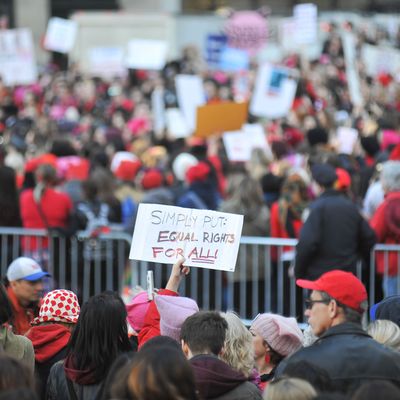
If you’re like most Americans, you’re probably at least a little worried about climate change — and you probably aren’t talking about it. Research has shown that two-thirds of people in the U.S. say they’re “moderately interested” or “very interested” in global warming; at the same time, around 70 percent say they rarely or never broach the subject with the people close to them. It’s a paradox that also doubles as an explanation: Climate scientists have suggested that the reason people don’t discuss climate change is simply because they don’t hear it being discussed, a phenomenon sometimes referred to as the “spiral of silence.”
The term was coined by German political scientist Elisabeth Noelle-Neumann in her book The Spiral of Silence: Public Opinion — Our Social Skin, in which she observed that silence can manifest itself in different ways: Both people who hold majority opinions and those in the minority will often keep quiet on issues that are important to them, but they’ll do it for different reasons. But both of those reasons, explains Elizabeth Suhay, a political scientist who studies conformity, stem from a misjudgment about the prevalence of their opinions. “The majority just assumes that everybody thinks like them,” she says, “and people in the minority think they’re the only ones.”
In The Spiral of Silence, public opinion was defined as “attitudes one can express without running the danger of isolating oneself.” According to Noelle-Neumann, most people have an uncanny ability to gauge which opinions are popular at any given moment and act accordingly — which means that people with minority opinions, fearing social isolation, will make a conscious choice not to speak up. “If you’re voicing an opinion that’s quite different from the majority in your group, and if it’s a topic that’s important to a group, then they will judge you negatively,” Suhay explains. Staying within the in-group can be a powerful motivator.
That’s not always necessarily a bad thing — in environments where public opinion leans toward tolerance, the spiral of silence can be a way of keeping hate out of public discourse. When people with racist, xenophobic, homophobic, or otherwise prejudiced views feel that they’re in the minority, it means that oppressed groups may feel more comfortable expressing themselves, like the way LGBTQ people feel more comfortable coming out in states where same-sex marriage is legal. “We had a kind of a spiral of silence in the liberal direction under the Obama years,” Suhay says, which “led us to conformity around not being prejudiced.”
These days, the pendulum has now swung the other way. Since Donald Trump was elected president, hate crimes have been on the rise, and many people are now more comfortable voicing xenophobic sentiments they would have kept hidden in previous years. Still, the split between the popular vote and the electoral vote in the past election seems to have created an interesting dynamic with regard to the spiral of silence, one in which neither side really feels like a minority or majority in the national conversation. So far, Americans have been very vocal about opposing and protesting Trump’s policies; in a recent poll, 43 percent said they “disapproved strongly” of his behavior as president.
The so-called “filter bubble” may also play a role in changing the way the spiral of silence works. Noelle-Neumann argued that we tend to overestimate the popularity of the opinions we see featured in influential newspapers and TV channels — meaning that media, especially television, could create a spiral of silence: people who don’t see their views on TV believe other people must not hold them, while people who do see their views on TV believe that everyone must agree. But these days, social media has, to an extent, undone that effect on the national level, creating smaller communities with their own spirals: “We’re talking with these networks of people who are like us, and that exaggerates the spiral of silence at the subgroup level,” Suhay says. Research bears this out: According to a 2014 Pew Research study, “Not only were social media sites not an alternative forum for discussion, social media users were less willing to share their opinions in face-to-face settings.”
But the changing state of the way we consume information doesn’t just change how we understand the spiral of silence — it also makes it difficult to know how it will play out in the future. Noelle-Neumann’s model described the spiral of silence in the context of nations. “But in any nation, there are different groups of people,” Suhay says, and those various groups are looking more and more like echo chambers. “That’s one thing that I think she and many others have missed when they talk about conformity.”
Still, though it was created for another time, the spiral-of-silence model is a key thing to keep in mind during this one. Not only to help us more effectively address hot-button issues, like climate change, but also to help us make sense of our current political situation in the U.S. All the more so when you consider that Noelle-Neumann developed her theory to better understand Hitler’s rise to power — a rise made that much easier by the silence of others.




